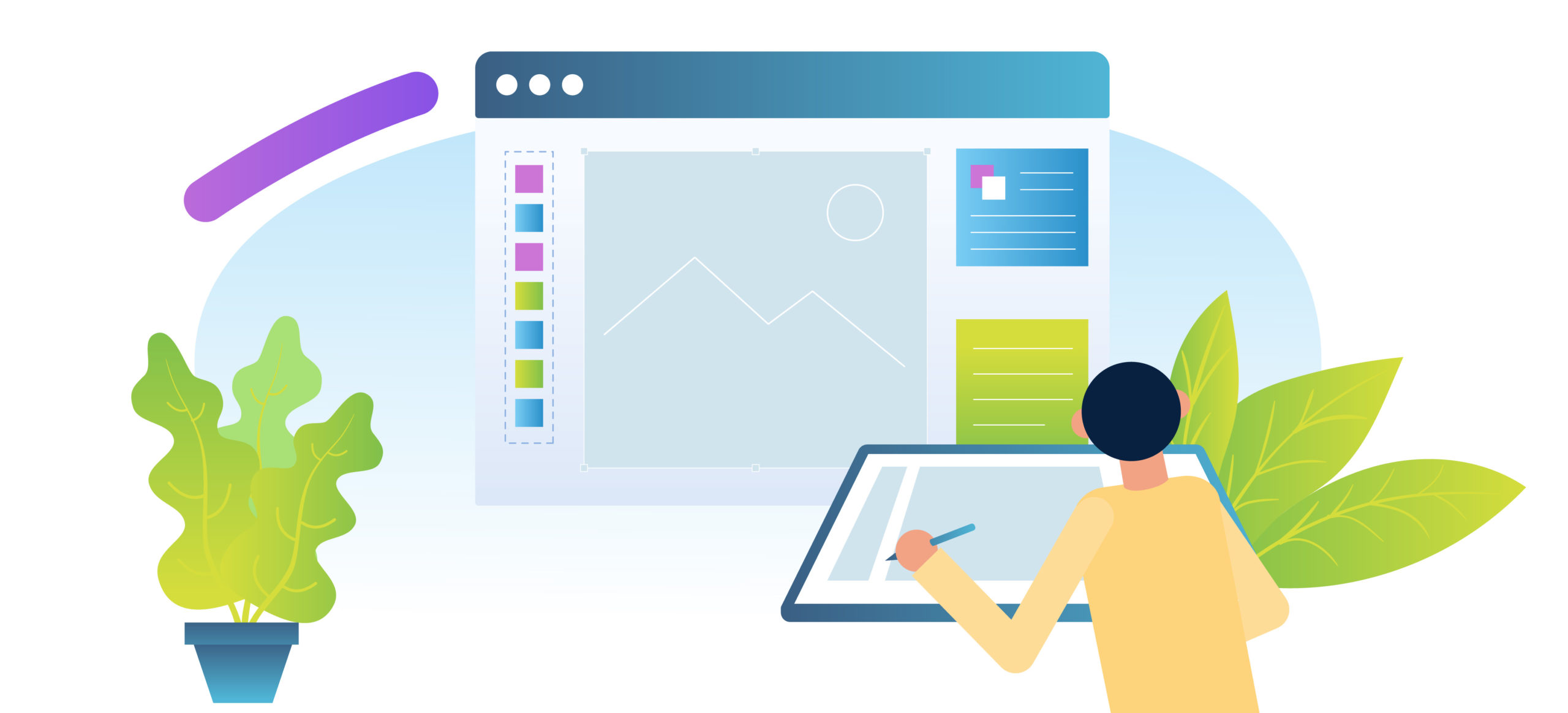
This article is for any graphic designer learning how to start an agency.
There are certain essentials that every business plan must have, regardless of the type of agency you are trying to launch (such as a marketing agency, creative agency, advertising agency, and others). We talk through these business plan essentials in our 5 step guide on how to start a graphic design business. While the items outlined there are necessary to consider when launching your agency, there are 7 additional elements to consider when developing your own graphic design business plan.
1. Design Tools
How will you do your work? What creative tools do you need to produce successful designs, and how much do those tools cost? Can you spread the cost over monthly payments? Can you supplement your toolkit with free tools? The cost of software purchases and subscriptions can add up incredibly quickly, so it’s critical to be strategic with software decisions as you begin formulating your graphic design business plan.
Adobe has become an industry staple for creative work, and their Photoshop, Illustrator, and InDesign programs (among others) will likely be essential for your work. If your work encompass any type of interactive deliverables (websites, apps, etc.), it will also be important to find a quality prototyping tool. InVision and Figma are well-known prototyping tools (we’ve tried both and prefer Figma over InVision). If you find yourself quickly spinning up simple marketing websites, Webflow will quickly become an indispensable part of your toolkit.
2. Project Management Tools
How will you ensure your projects get completed on time, every time? Project management certainly isn’t the reason you decided to launch your own graphic design business, but your agency won’t last long if deadlines are missed and clients aren’t kept happy.
There are nearly endless project and resource management tools out there, with seemingly more added every day. Unfortunately, there’s no one-size-fits-all solution, and the only way to find the right tool for your agency is to try out a variety until you find the best tool to fit your production process. Speaking of…
3. Production Process
What structures will you put in place to ensure a smooth project journey for your clients? What milestones do you need their feedback at? How many revisions will you include during each design milestone? Identifying and codifying the right production process for your design work (and explaining this process to your clients upfront) is an essential part of your graphic design business plan. A well-informed client is a happy client.
4. Paperwork, Paperwork, Paperwork
A handshake is great, but a signed Statement of Work is better. Just as you must develop a structured process for creating successful graphic designs, you must also develop a structured contract that accurately defines scope as well as the process for what happens when a client pushes your work outside of that defined scope. The more that can be identified upfront, the better.
In addition to helping maintain budgets and timelines, a well-defined vision of scope also gives you multiple levers you can pull to reduce cost for budget-conscious clients, without forcing you to work more for less. For example, are there specific features of a webpage you’re designing that could be removed in order to bring down both scope and cost?
It’s important that your graphic design business plan includes the thoughtful preparation of paperwork that will help financially protect your agency.
5. Hiring
Finding quality employees to support your graphic design business can be challenging. Save yourself some headache by establishing some hiring “rules” before you begin searching for new talent. Will you hire freelancers, or fulltime? Seasoned talent or recent graduates? Will you require employees to work in your office, or remotely?
Some work can be easily outsourced or produced remotely; other work can only be truly successful when creative teams collaborate together under the same roof. Think about the type of design work you want to sell, and hire accordingly.
6. Sales Model
What are you selling and how will you sell it?
It’s likely easiest to begin selling specific deliverables (for example: a brochure design, a 30-second motion graphic, a marketing microsite). It’s easy to quantify these deliverables in a way that both the agency and client can agree to a scope. Another approach is to sell your hours, or capacity. You and the client come to an agreement of an estimated amount of time it will take you to create a design, and you deliver a final bill as calculated by the amount of time it took you to create the design multiplied by an agreed-to hourly rate.
You must also determine when you will invoice your clients, and on what payment terms. For deliverable-based work, a standard 50/50 approach works best—you submit an upfront invoice for the first 50% of a project’s cost at the start of an engagement, and the final 50% after the project is fully completed. A net-30 payment plan allows your client’s accounting team ample opportunity to remit payment, while also ensuring a short enough time horizon that you can collect the cash you need to keep your graphic design business afloat.
7. Marketing
Your website is the best place for you to show off who you are and the quality of your graphic design work. Take the time to really highlight the value of your design work, and the thought process that goes into your graphic design deliverables. Case studies provide a great opportunity to show potential customers how you have solved business challenges for you clients through the thoughtful application of your graphic design skills.
It’s also important that you maintain a presence on social media. Platforms like Twitter, Dribbble, and Instagram offer you a space to share your thought leadership and expertise, engaging with your customers as well as other creative leaders in your space. Engage regularly with your audience and colleagues, and share work samples as often as you can.
These 7 items are all important pieces of any graphic design business plan. Read through our other articles to help further build a strong and lasting foundation for your graphic design agency.




